The Great Sand Dunes are located in southern Colorado, near the town of Alamosa, and are one of the state’s most remarkable natural wonders. Nestled against the rugged backdrop of the Sangre de Cristo Mountains, the dunes stretch across an area of about 30 square miles. These towering dunes, some reaching heights of over 750 feet, are the tallest in North America. They are a captivating sight, with their constantly shifting shapes and shades caused by the interplay of wind and light. The Great Sand Dunes offer a unique landscape where vast expanses of desert-like dunes meet alpine forests, creating a striking contrast that attracts visitors year-round.
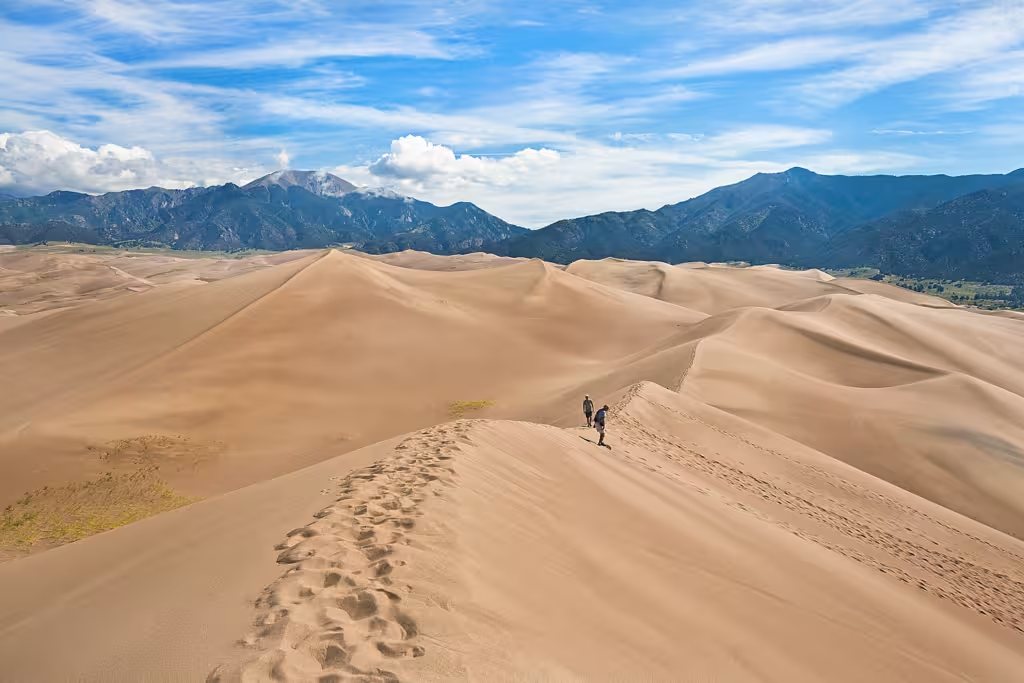
The Great Sand Dunes hold immense ecological, geological, and cultural significance. Ecologically, the area is a diverse habitat, home to a variety of species that have adapted to the extreme conditions, from the rare Great Sand Dunes tiger beetle to a range of plant life that stabilizes the sand. Geologically, the dunes are a living laboratory, illustrating the powerful forces of wind and water erosion over thousands of years. Culturally, the dunes have been a sacred site for Indigenous peoples for centuries, holding spiritual importance and featuring in numerous cultural narratives. The area’s significance is recognized at the national level; it was designated as a National Park and Preserve in 2004, ensuring the protection of its unique landscapes and ecosystems for future generations.
Contents
Origins of the Sand Dunes
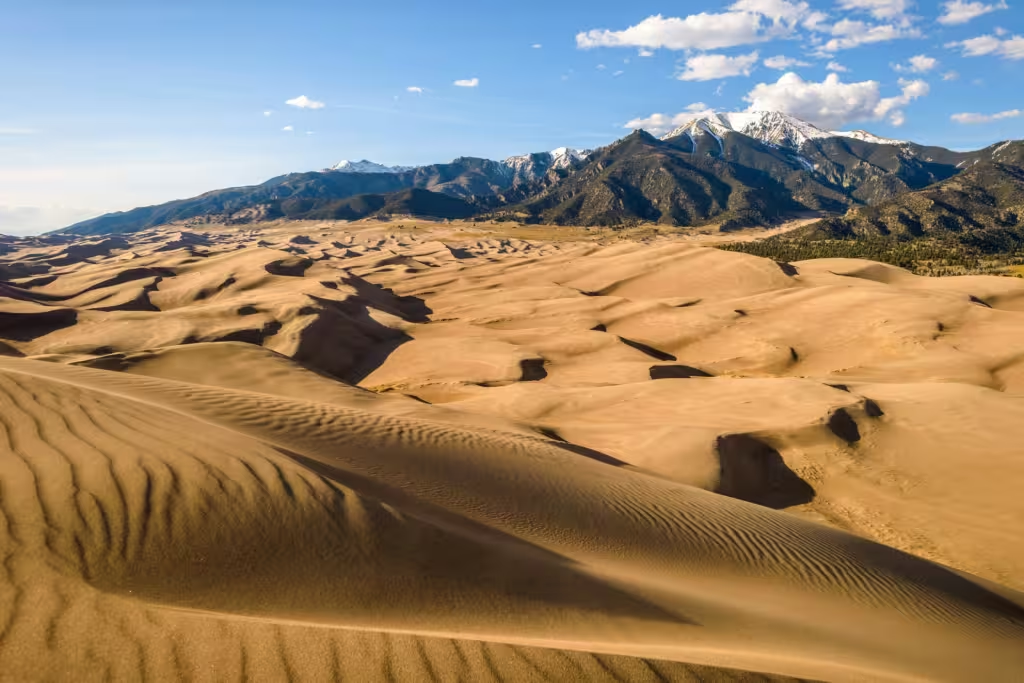
The Great Sand Dunes have a rich geological history that spans tens of thousands of years, shaped by the forces of wind, water, and mountain formations. The origins of these dunes date back to the retreat of ancient lakes that once filled the San Luis Valley during the last Ice Age. As these lakes dried up, they left behind vast deposits of sand. Over time, prevailing southwesterly winds funneled through the valley, carrying and depositing sand against the natural barrier of the Sangre de Cristo Mountains. The process of wind erosion and deposition continues today, with the mountains playing a crucial role by trapping the sand and allowing the dunes to grow ever higher and more expansive.
Size and Structure
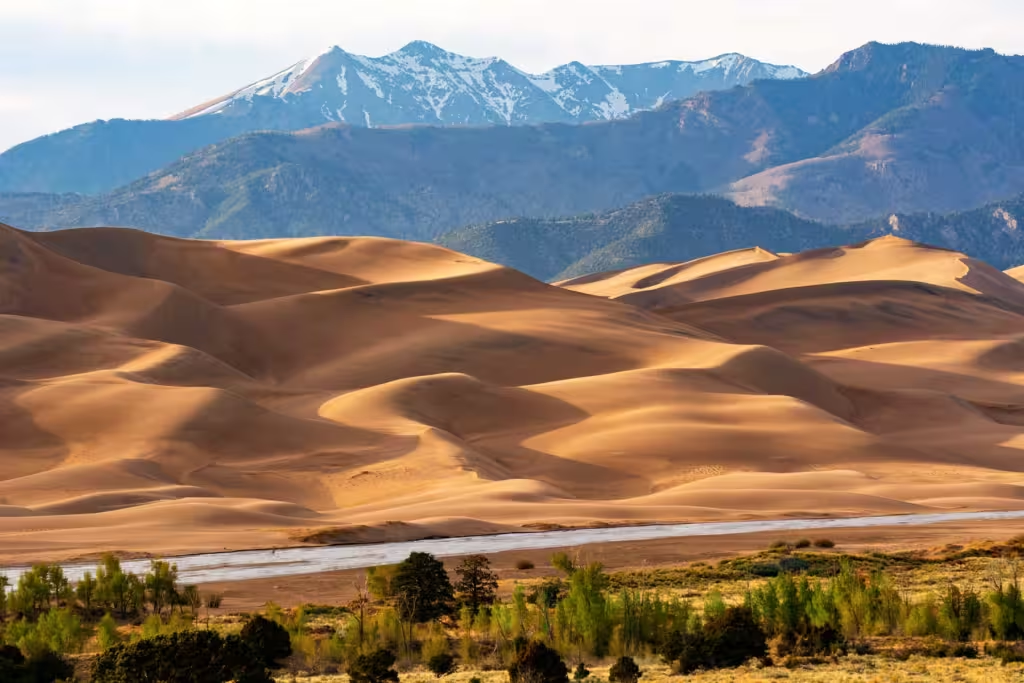
The Great Sand Dunes cover an area of approximately 30 square miles, with the tallest dunes reaching impressive heights of over 750 feet. The tallest dune, known as Star Dune, stands as the highest in North America. The sand itself is unique, consisting primarily of fine grains of quartz and feldspar, which have been ground down by centuries of erosion. The dunes exhibit a wide range of structures, from sharply cresting ridges to smooth, flowing slopes. The interplay between wind direction and speed creates a dynamic landscape where new dunes are constantly forming, merging, and shifting, offering an ever-changing panorama.
The Role of the San Luis Valley

The surrounding San Luis Valley and the Sangre de Cristo Mountains are integral to the formation and maintenance of the Great Sand Dunes. The valley, one of the largest in the world, serves as a vast catchment area where streams and rivers originating from the surrounding mountains deposit sediments. Seasonal streams, such as Medano and Sand Creeks, carry these sediments toward the dunes, contributing to their growth and stability. Additionally, the mountains create a wind corridor that funnels and intensifies the winds, aiding in the ongoing process of dune formation. The interaction between the dunes and their environment creates a unique and delicate ecosystem, where the sand, water, and vegetation are in constant flux, contributing to the dynamic nature of the Great Sand Dunes.
Cultural and Historical Significance
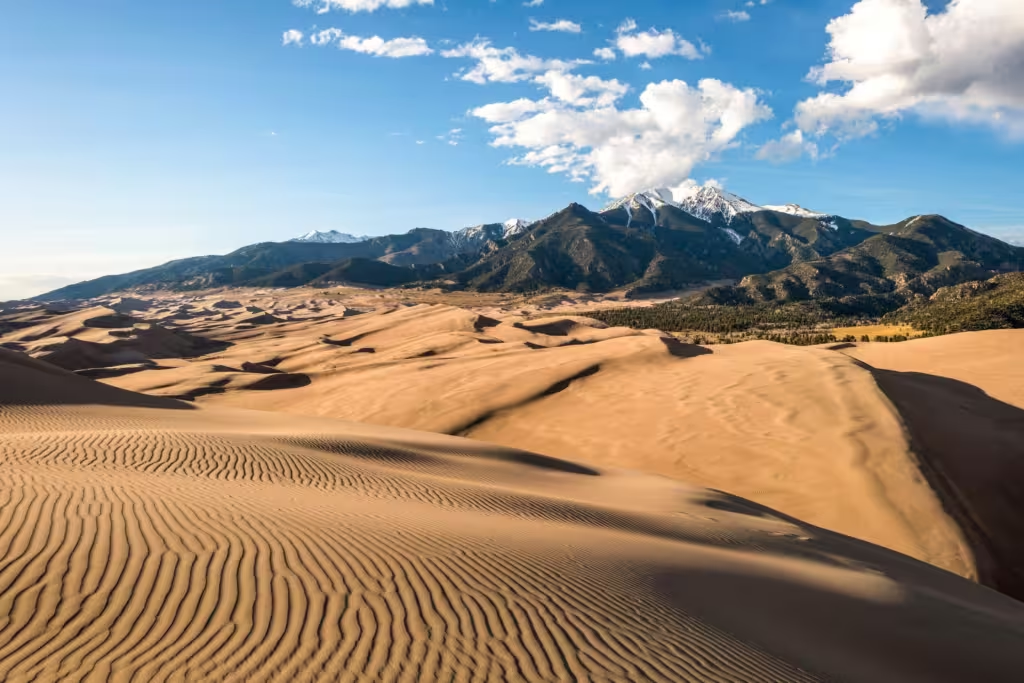
The Great Sand Dunes hold deep cultural and historical significance, particularly for the Indigenous peoples who have lived in the region for millennia. Native American tribes such as the Ute, Apache, and Navajo consider the dunes a sacred site, embedded in their spiritual practices and oral traditions. These tribes have long recognized the dunes as a place of power and reverence, often featuring them in their creation stories and cultural narratives. European explorers and settlers later discovered the dunes in the 16th century, and they were subsequently mapped and studied by geologists and naturalists. The area’s rich history reflects the intersection of natural wonder and human experience, making the dunes a symbol of both the enduring presence of Indigenous cultures and the exploratory spirit of those who came later.
Recreational Activities
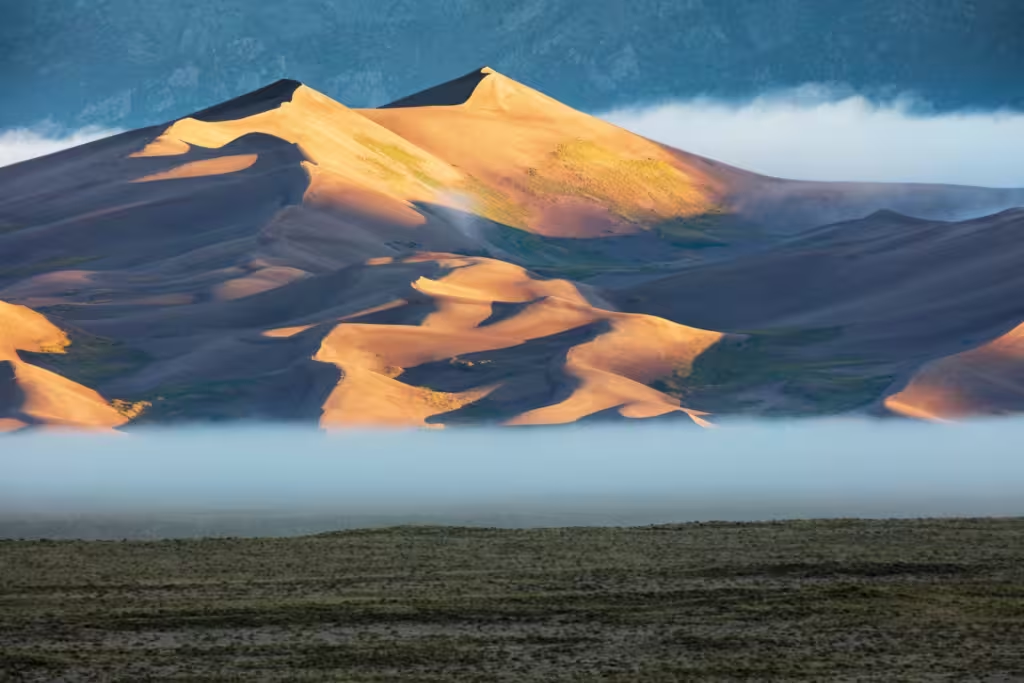
The Great Sand Dunes offer a wide array of recreational activities that attract visitors from all over the world. One of the most popular activities is sandboarding and sand sledding, where thrill-seekers glide down the steep slopes of the dunes. Hiking is another favorite, with trails leading to the top of the tallest dunes, offering panoramic views of the surrounding mountains and valley. For those seeking a more immersive experience, backpacking and camping within the dunes or in the adjacent wilderness areas provide an opportunity to explore the landscape in depth. Seasonal streams like Medano Creek create a natural beach-like environment at the base of the dunes, perfect for wading and picnicking during the warmer months. Stargazing is also a popular activity, as the remote location of the dunes offers some of the clearest night skies in North America, making it an ideal spot for observing constellations and meteor showers. These activities, combined with the stunning natural beauty, make the Great Sand Dunes a unique and versatile destination for outdoor enthusiasts.




































